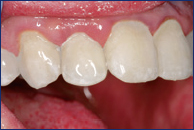Placing Resin Fillings
|
When a tooth needs a restoration, a composite resin filling can be an effective, good-looking choice.
|
The Procedure
We begin by numbing the area to make you comfortable. Depending on the size of the filling and which tooth we’re working on, we may also place a rubber dam to protect your mouth and throat while we work. Then we use the handpiece to remove any decay and shape the tooth, so it will securely hold the filling. To mold the filling to the shape of the tooth, we surround the tooth with a thin, flexible band. We may also use a small wedge to hold the band snugly in place. We may apply a mild solution that chemically etches the tooth, so the resin will have a strong bond with the tooth. Next we carefully place the resin into the prepared tooth, layer by layer. A special light is often used to harden each layer. Then we shape the final contours of the filling, check the fit and your bite and confirm that you’ll be able to floss around the tooth and keep it healthy. Last, we give the filling a final polish. The Benefits of a Resin Filling Composite resin fillings have several benefits. Because they bond directly to teeth, resin fillings can create a very strong seal to protect your teeth, and the material is durable. Resin fillings are a great way to restore teeth, especially the ones in the front of your mouth. We can choose the color of the resin material to match or enhance your teeth for a beautiful and natural-looking smile. |




